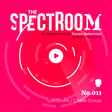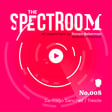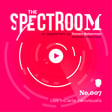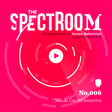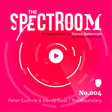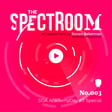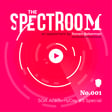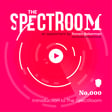Become a Creator today!Start creating today - Share your story with the world!
Start for free
00:00:00
00:00:01

TSR 005: Alex York and Iain Banks from Recent Spaces in London
Traveling the road from animation to architectural visualization, this session brings you Alex York and Iain Banks from the London-based studio Recent Spaces. They have a remarkable body of work, and we dive into why they are in the business, how they do it and what makes them stand out. They have a somewhat unique perspective as animators that are excelling in the ArchViz world. Here are some of the highlights from this session of The SpectRoom. Why ArchViz Beats Animation The pathway that takes you from absolutely nothing to a fully animated scene is a very complicated one. Comparing that to the modular and linear process of architectural visualization — which Alex and Iain have found comes with the huge appeal of being able create a scene rapidly and then focus intensely on the details. That gratification is what has kept these two firmly based in architecture. Animated Stills are Becoming A Client Favorite Transitioning from still images to animated stills allows clients to see a more natural pathway through projects. Alex and Iain have fine-tuned the art of taking their images and creating less CGI and fly-through, and a more filmic approach to the building by viewing them like an architectural photographer would do. They’ve also found a few other tricks that clients are enjoying as well. Corona Renderer is the Perfect Replacement for V-Ray In the Recent Space tool box you’ll find Corona Renderer, 3ds Max, Forest Pack, and RailClone, but you won’t see much of V-Ray anymore. We talk about the reasons why, and it all has to to do with being an artist — not a technician. Alex and Iain have found that Corona Renderer allows them to spend their time and energies on their true passion, and to create the high-end renderings that their clients want. Photographers and Visualizers — Who Gets the Credit? Architectural visualizers know how difficult it can be to get full credit for their images, especially in comparison to architectural photographers. Copyrights and image credit goes to photographers, and their position of prestige is much more established. Visualizers, on the other hand, are still seeking to secure the same place of respect. Alex and Iain share their thoughts on the difference between the two, and potential solutions to the problem. Key Takeaways [1:12] Alex and Iain take us down the road from computer animation to architectural visualization. [7:00] Disadvantages that come with not being from the world of architecture… if there are any. [9:00] The transition from still images to animated stills. [11:28] How experiences at Hayes Davidson shaped their decision to create Recent Spaces. [15:20] The 30-second Recent Spaces elevator pitch (minus the VR goggles). [19:23] What their project workflow looks like, including the details that make it perfect. [22:14] The tool set line up, and how it works for them. [27:17] Detail-oriented employees are invited to apply at Recent Spaces. [29:18] Work-life balance starts with setting boundaries with clients. [32:22] Photographers and visualizers — how can both get the credit they deserve? [37:10] What the London archVIZ community is all about. [38:52] The future of work at Recent Spaces means filling the animating needs of visualizers. [43:00] To capture the attention of Alex and Iain, just send over some images. Main Quotes “I’m obsessed with the details.” — Alex York “As a visualizer, it’s very important that you not get bogged down in what ‘they’ want.” — Iain Banks “What we’re trying to do is move away from CGI.” — Alex York “We try very hard to produce images that are not just accurate in detail, but are really beautiful in a classy and understated way.” — Alex York “We want our employees to enjoy working here, and to produce something that is amazing.” — Iain Banks Software Mentions

